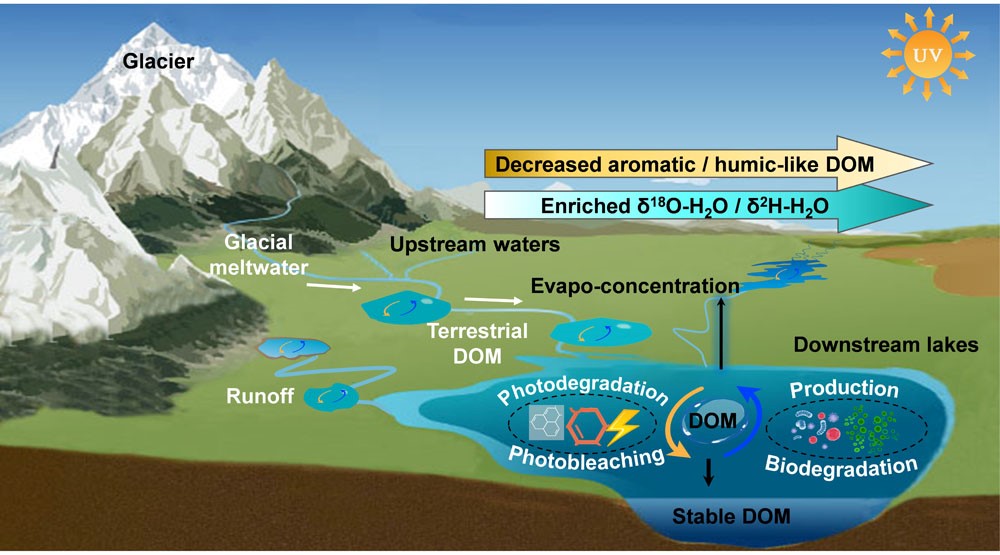Researchers Reveal Quantitative Response of the DOM Composition to Hydrological Processes in the Watershed of the Largest Lake in Tibet
Dissolved organic matter (DOM) encompasses organic carbon in aquatic systems. Climate and hydrology, land use, and trophic status can influence DOM properties in aquatic ecosystems at regional or watershed scales.
Alpine river and lake systems on the Tibetan Plateau are highly sensitive indicators and amplifiers of global climate change and important components of the carbon cycle. However, knowledge about the sources and transformations of DOM throughout the aquatic continuum in alpine regions is relatively limited due to the remoteness and heterogeneity of the landscape. Specifically, there is a need to determine the extent to which DOM composition responds to hydrological controls on the Tibetan Plateau.
Researchers led by Prof. ZHANG Yunlin from the Nanjing Institute of Geography and Limnology and Dr. ZHOU Lei from the Institute of Soil Sciences, Chinese Academy of Sciences, have addressed the question by investigating variability in DOM quality and quantity from headwaters and downstream rivers and lakes along the watershed of Selin Co, the largest lake in Tibet, and quantifying the novel linkages between water stable isotopes and DOM composition.
Their findings were published in Environmental Science & Technology on March 9.
The results show an ideal proxy of water isotopes to investigate the effect of hydrological factors, including the extent of hydrological connection, evaporation, and water retention time in this watershed. The DOC concentrations increased, whereas DOM aromaticity decreased along the river-lake continuum. Strong relationships between water isotopes and DOM composition indicate depleted DOM aromaticity and enhanced microbial activity along the flow paths with lengthened ultraviolet exposure and retention time. Glacier meltwater contributed to elevated relative abundances of aliphatic and protein-like compounds in headwater streams, reflecting the short water retention time and close contact with the catchment, and the hydrological controls on DOM composition are more pronounced in lakes than in rivers.
Based on the warming and wetting trend of the climate in the Tibetan Plateau, increases in precipitation and glacier thaw may contribute to greater proportions of surface or groundwater in the rivers and lakes, altering DOM composition and potentially their biogeochemical function in surface waters on the Tibetan Plateau.
“Our findings reveal the quantitative response of the DOM composition of the plateau river-lake continuum to hydrological processes, and provide a theoretical basis for predicting the impact of climate change on the carbon cycle of plateau aquatic ecosystems,” said Dr. Zhou.

Diagram showing changes in DOM composition throughout the river-lake continuum (Image by ZHOU Lei)
Contact
TAN Lei
Nanjing Institute of Geography and Limnology
E-mail: ltan@niglas.ac.cn
